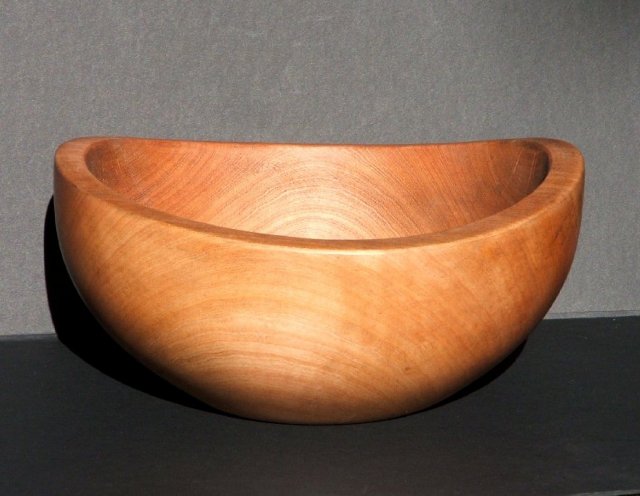Drying Oregon Madrone
Pacific Madrone is prone to drying movement, but that can make it interesting to woodworkers. May 13, 2009
Question
I just cut down several trees of pacific madrone. Each tree was about 12" at 4' above the base. The logs taper to about 7". I will have these logs milled into 4/4 stock within the next few days. I wish to dry without the benefit of a kiln. I expect to sticker the lumber, then wrap in plastic for about three months for a slow initial dry. Then I expect to do a dry in a more traditional manner. Is this a correct procedure and schedule? Will this reduce the splitting and warping normally associated with pacific madrone?
Forum Responses
(Sawing and Drying Forum)
From contributor S:
We don't have madrone around here, so my comments are based on what I've read about it. Madrone is a fast growing tree, and wood from fast growing trees is usually somewhat unstable. Adding to that is the fact that your trees are somewhat small. So your problems with distortion during drying may be even greater.
So here's a few things to consider. Saw 8/4 or 10/4 planks instead of 4/4 and resaw the thick stock into thinner boards after its dried. Use more stickers, maybe one every foot. Put plenty of weight like cinderblocks on top of the pile. End coat the planks with Anchor seal or thick latex paint. The idea of wrapping the lumber in plastic is somewhat questionable, this could cause more problems than it solves. So after all the hassle of dealing with these small logs, what are you going to have? Is it all worth it? Maybe it would be better to feed them into the woodstove and look for some better wood.
From contributor J:
Latex paint will not seal the ends. If you don't use Anchor seal, use paraffin. You want to prevent the transpiration of moisture out the ends of the boards. If the stack is wrapped in plastic the wood will likely mold. I have messed around with small, unusual logs, most of it ends up being waste wood, but occasionally you get something worthwhile. Just know that going in and you won't be disappointed.
From Gene Wengert, forum technical advisor:
You definitely need to coat the ends very well. Do not use plastic as the wood will not dry that way, but it will mold. Use normal drying. You will get better drying results with 4/4.
From contributor M:
Pacific madrone is notorious for warping. Seal the ends with Anchor seal or other emulsifable wax (do not use latex paint). If you are west of the Cascades, sticker on 18" centers and place the wood stack out of the rain, such as in an open shed or non-heated airy barn. Make sure that the stack has air movement around it, as there will be little or no drying during our wet winters. The wood will start to dry out if we have our usual mid-January cold dry period, but don't expect to have dry wood until early summer (4/4). The logs that you are sawing are on the small side, so if you quarter-saw them, you will reduce the loss to warping. If the logs have twist in them, they will warp badly, regardless of how they are dried. Madrone is like Oregon white oak, it is all about reading the logs, knowing how to saw each one to yield quality lumber and knowing the tricks to drying the wood. Madrone is definitely worth it if you know what you are doing. Good luck and have fun. There is nothing more satisfying or beautiful than Oregon hardwoods.
From contributor W:
I've sawn a bunch of this stuff and it's going to walk-and-talk on you, no matter what you do. It seems to take an unusually long time to dry, too. That is, to stop moving around, even when it reads dry on your moisture meter. Do yourself a favor and allow for an 80% defect factor, then you may be blessed with only 50% Of course, twist can be jointed out and split ends can be cut off so you'll have a good stash to work with but just don't get your hopes up too high. Whatever you get out of your nice green pile is going to take extra work to get S4S lumber.
There are lots of guys in the woodturning world who love the stuff because it warps and moves so much. Turn it green, right out of the log and submerge in denatured alcohol for 24 hours, then dry as usual. It seems to help with the cracking problem but will not stop the warping/twisting. Madrone finishes and polishes very nicely. The picture below is a bowl turned green and tweaked out to an oval. Can't beat madrone for firewood, so there's always that if you get too frustrated.

Click here for higher quality, full size image
